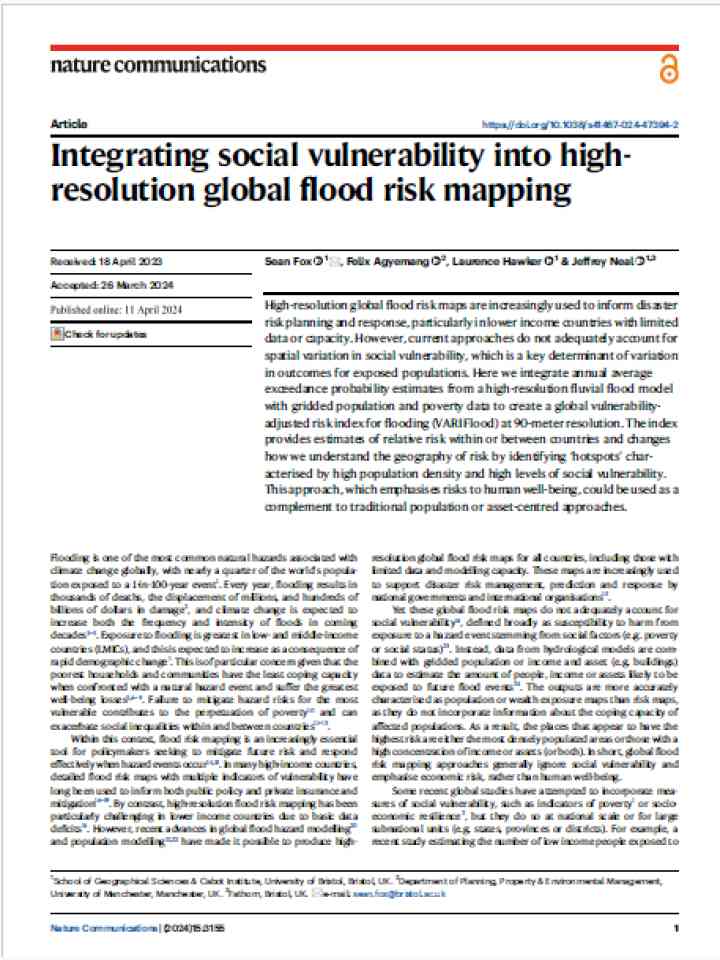Integrating social vulnerability into high-resolution global flood risk mapping
The study aims to identify and characterize 'hotspots' of flood risk, accounting for spatial variation in social vulnerability, to provide improved insights into the geography of risk and enhance disaster risk planning and response efforts, particularly in lower income countries with limited data or capacity. Exposure to flooding is greatest in low- and middle-income countries (LMICs), and this is expected to increase as a consequence of rapid demographic change.
The results presented are primarily intended to illustrate an alternative approach to risk estimation with global models rather than reflect definitive estimates of populations at risk within and between countries. The need for higher resolution and higher quality social vulnerability data is particularly acute in rapidly urbanising regions in LMICs.
Explore further
